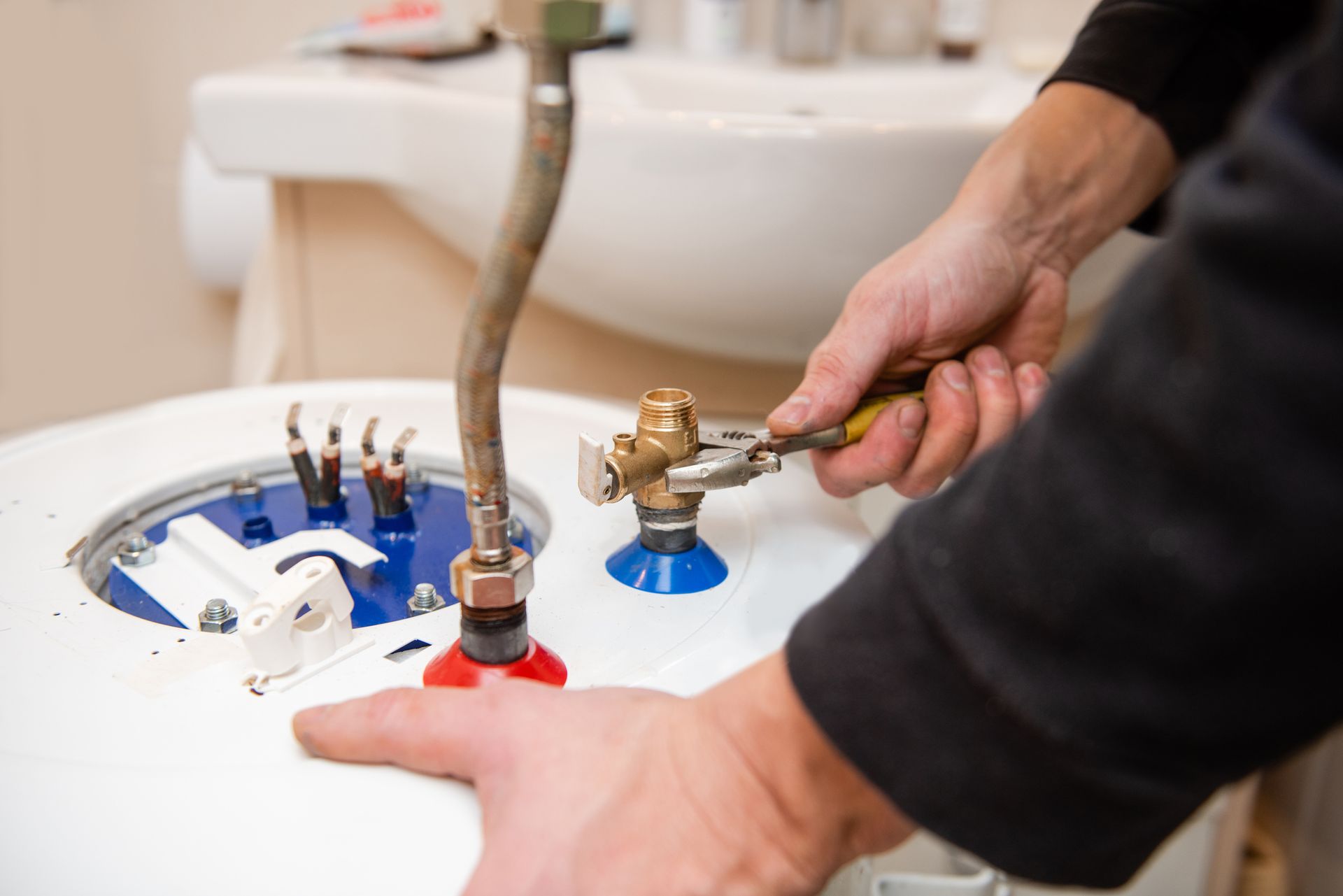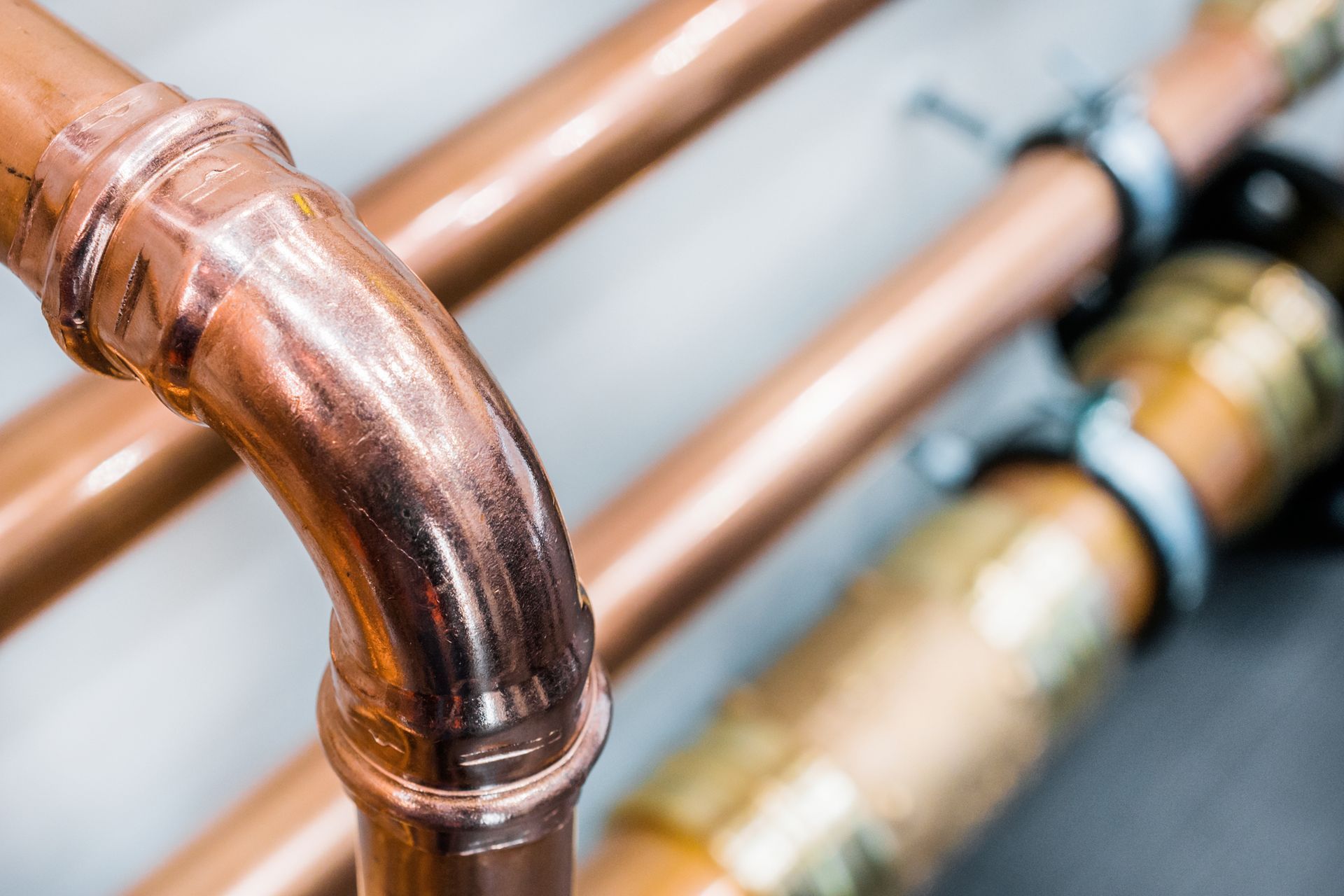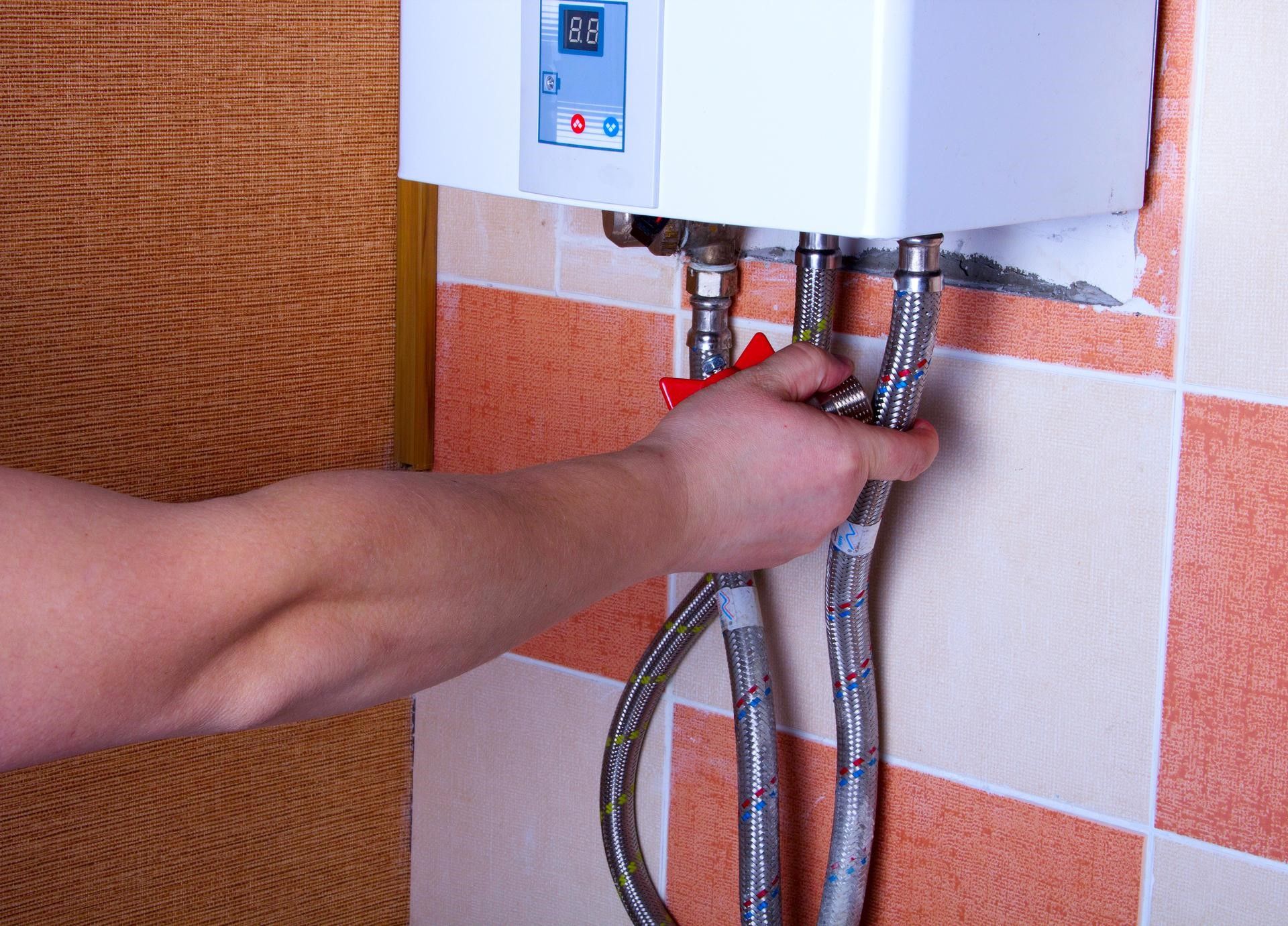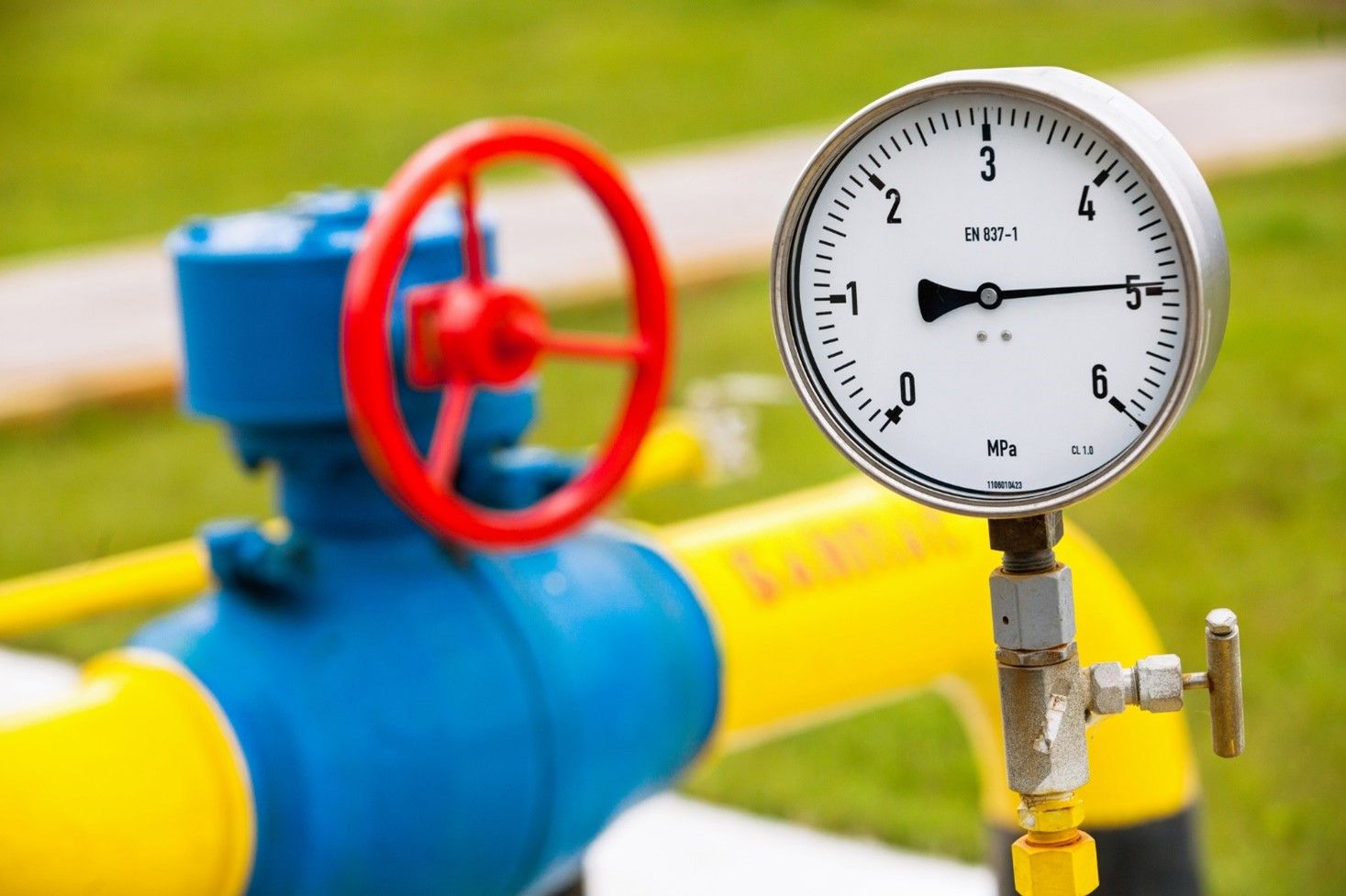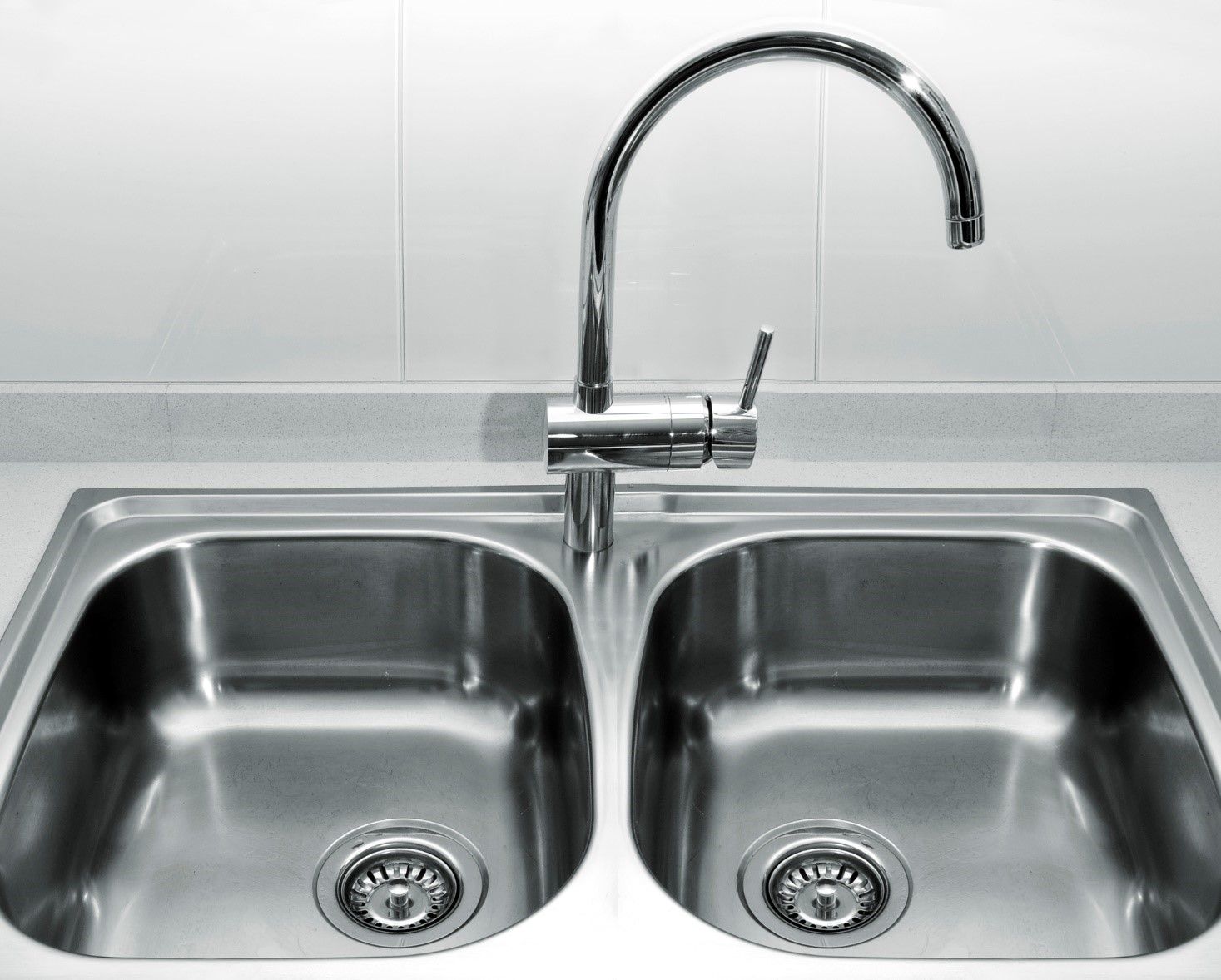Everything You Should Know About Flushing Your Water Heater Tank
Your water heater needs regular maintenance like any other appliance. As part of this maintenance, you should flush your water heater tank regularly to maintain your water heater’s energy efficiency and maximize its lifespan. Here is everything you should know about flushing your water heater.
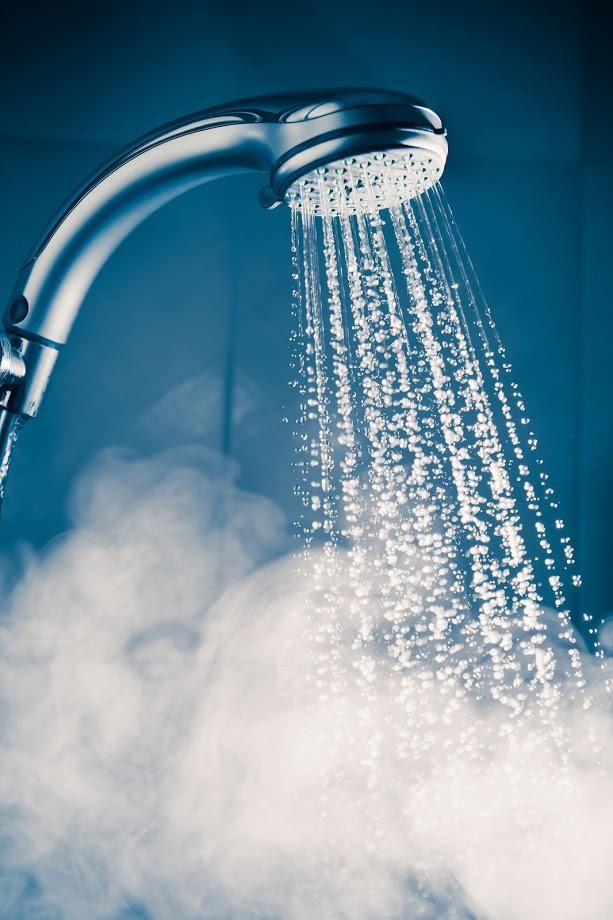
Why Should You Flush Your Water Heater?
Tap water contains minerals that are safe to drink, but that can also build up in the bottom of your water heater tank. With enough time, these sediments will form a hardened layer that blocks heat transfer between the heating element and the water in the tank. This forces your water heater to run longer to provide the same amount of hot water, which wastes energy.
Because sediment causes your water heater to run longer, it is more likely to overheat and damage the protective lining inside the tank. The lining is vital to prevent the water from rusting the tank from the inside out. In the worst case, rust can cause your water heater tank to burst. Since most water heaters contain 30 to 80 gallons of water, a burst tank is a recipe for disastrous water damage to your home.
When Should You Flush Your Heater?
If you keep a close eye on the water from your faucets, you can get a heads-up that your water heater tank needs to be flushed. One of the first signs that many people notice is reduced hot water or no hot water at all. If the lining of the tank has begun to wear away, your water may also be a ruddy color or have an unpleasant smell and taste.
If you hear banging noises inside your water heater tank when you use hot water, this is most likely due to sediment buildup as well. Hard chunks of sediment can break away and bang against the sides of the tank as water flows through it.
For a more direct test, you can place a bucket under the water heater drain valve and open it to let a small amount of water run out. If the water is sludgy, you need to flush the heater.
How Do You Flush Your Water Heater?
If you are DIY-oriented, you can attempt to flush your water heater yourself. First, turn off the cold water supply and gas supply valve, and turn the water heater thermostat all the way down. This will prevent damage that can occur if the heater turns on after it has been drained.
Connect a hose (you can use a garden hose) to the drain valve, and position it so that it will run outside away from your foundation or to a drain inside your home. Before you open the drain valve, turn on all the hot water faucets in your home. This will help the tank to drain faster.
Then open the drain valve, and check the other end of the hose to make sure that water flows out of the valve. If not, the drain may be clogged, and you may need to open the temperature-pressure release and use a wet/dry vac to vacuum sediment out of the valve. Wear gloves for protection, as the water will be hot.
When the flow from the drain valve stops, turn the cold water supply back on to rinse out the tank. Continue to run cold water until the water from the hose is clear, then shut the supply back off and remove the hose. Vacuum any remaining sediment out of the valve, and then shut the valve and turn the cold water supply back on.
After a minute or two, you should see clear water coming from the hot water faucets. Finally, you can turn off the faucets, reset the thermostat, open the gas supply, and relight the pilot light. Your water should be hot again within
20 minutes or less.
If you know how to flush your water heater tank, you’ll save money on your energy bill and get the most out of your water heater. If you need to hire a plumber for full-service tank flushing, inspection, and repairs, contact Quality Plumbing so our certified, experienced professionals can help you!
Contact us today for a consultation!

★★★★★
The total process from booking a service call, by phone, to the installation of a steel reinforced waterline hose on our refrigerator, was a pleasurable experience. A retired plumber recommended QP. Jeff had to pull out the refrigerator, remove the plastic waterline, install the new waterline, check to make sure the water dispenser was working and put the refrigerator back. Jeff was careful and mindfull of our wooden floor as the refrigerator was in a built-in cabinet. Since we live in a condo we want to eliminate all possibilities for a water leak. Jeff not only did his skillful job, he also educated us on the different water supply lines. I would recommend QP.
- Janeine G.
Button
★★★★★
Quality Plumbing did a rough-in plumbing install for a bathroom and kitchen sink in my basement. Very communicative, helped plan the space, and did a great job on the install. Will be using them again!
- Ian H.
Button
★★★★★
Called them when my water heater broke, they were over same day with a new one. Logan is great, he's fixed a couple things over the last year and is always professional and informative.
- Nick B.
Button
★★★★★
Quality plumbing is amazing 👏 when my brothers home had a problem with water pressure, they were able to schedule quickly, identify the problem and provide cost effective solutions quickly. When they did the work, they were on time on budget and cleaned up everything afterwards. Thank you for your great service Quality Plumbing! …
- Rich R.

★★★★★
Quality Plumbing is my go-to plumbing company for all my projects. I had one big project and after meeting Jeff, I’ve specifically requested him to come out for my other 2 projects. He’s incredibly punctual, efficient, and keeps the area nice and clean. Great to communicate with and provides clear answers to all my questions. Jeff is very professional and knowledgeable in his craft. Every time I call, Delaney will always pick up my phone calls and get me scheduled right away. Never had great success with plumbing companies until I started working with Quality Plumbing. They have unbeatable prices and will provide you with an honest solution to your problems. Highly recommend choosing Quality Plumbing!
- Alex D.
Button

★★★★★
The total process from booking a service call, by phone, to the installation of a steel reinforced waterline hose on our refrigerator, was a pleasurable experience. A retired plumber recommended QP. Jeff had to pull out the refrigerator, remove the plastic waterline, install the new waterline, check to make sure the water dispenser was working and put the refrigerator back. Jeff was careful and mindfull of our wooden floor as the refrigerator was in a built-in cabinet. Since we live in a condo we want to eliminate all possibilities for a water leak. Jeff not only did his skillful job, he also educated us on the different water supply lines. I would recommend QP.
- Janeine G.
Button
★★★★★
Quality Plumbing did a rough-in plumbing install for a bathroom and kitchen sink in my basement. Very communicative, helped plan the space, and did a great job on the install. Will be using them again!
- Ian H.
Button
★★★★★
Called them when my water heater broke, they were over same day with a new one. Logan is great, he's fixed a couple things over the last year and is always professional and informative.
- Nick B.
Button
★★★★★
Quality plumbing is amazing 👏 when my brothers home had a problem with water pressure, they were able to schedule quickly, identify the problem and provide cost effective solutions quickly. When they did the work, they were on time on budget and cleaned up everything afterwards. Thank you for your great service Quality Plumbing! …
- Rich R.

★★★★★
Quality Plumbing is my go-to plumbing company for all my projects. I had one big project and after meeting Jeff, I’ve specifically requested him to come out for my other 2 projects. He’s incredibly punctual, efficient, and keeps the area nice and clean. Great to communicate with and provides clear answers to all my questions. Jeff is very professional and knowledgeable in his craft. Every time I call, Delaney will always pick up my phone calls and get me scheduled right away. Never had great success with plumbing companies until I started working with Quality Plumbing. They have unbeatable prices and will provide you with an honest solution to your problems. Highly recommend choosing Quality Plumbing!
- Alex D.
Button






